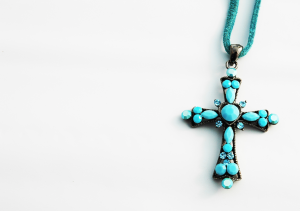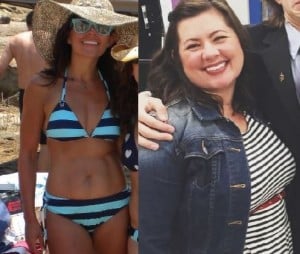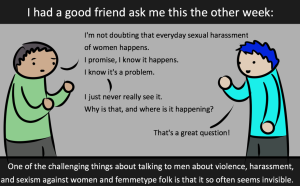
Source: The Catholic Transgender
I’m sure some of you can relate to this: I am an openly gay writer fortunate enough to have a diverse array of intelligent, curious people in my life.
With this gift, however, I am also given the responsibility of explaining so-called “Queer Stuff” and “Feminist Stuff” to my friends and loved ones.
This year’s Oscar ceremony raised questions from my friends, family, and co-workers, mainly regarding Ellen Degeneres’ drag queen joke and Jared Leto’s Leading Actor win for playing a trans woman in Dallas Buyer’s Club.
After fielding the same questions from people in different facets of my life, it dawned on me: Many people do not know the difference between trans women and drag queens!
There seems to be an assumption that all people assigned male at birth who grow up to wear clothing from the women’s section identify the same way.
And that couldn’t be further from the truth.
Even the most well-meaning, modern people can be ignorant of the nuances of gender and performance. Everyone learns about this stuff differently. It’s okay.
I won’t be the one-upping smartass with a keyboard shaming you for not knowing everything, and I trust that you won’t do that to others either.
The important thing is that you’re inquisitive enough to want the truth and open enough to listen to it.
So let’s talk about this difference.
Performance vs. Identity
I am sure you have heard confusing (and sometimes offensive!) terminology used interchangeably about drag queens and trans women.
Using identical labels (and insults) for entirely different groups of people is a rhetorical way to imply that those groups are the same.
But the most prominent difference between trans women and drag queens is that drag is a style of performance, while a trans life is just that – daily life.
A drag queen is a character.
A trans person is a real-life person. (That’s a sentence I never thought I’d have to write.)
To me, this concept seems simple, but our cultural narratives about gender and sexuality have blurred the lines between art and reality.
Objectification and the Media (Because This Is a Feminist Site)
Laverne Cox put it better than I ever could:
“The preoccupation with transition and surgery objectifies trans people. And then we don’t get to really deal with the real lived experiences.”
The media discourse surrounding the trans community often focuses on surgery, clothing, and the offensive notion that a trans woman is “born a boy” and then “transforms into a woman.”
This tired media storyline makes the average layperson come to some faulty conclusions about the trans community.
Do all trans women live life as men, then suddenly make the conscious decision to change their gender identity?
No.
How people come to their gender identities is as unique and varied as the individuals themselves.
Some people who are assigned male at birth assert their female gender identity once they can talk, and others discover that part of themselves later in life.
There is no one way to be trans, just like there is no one way to be human.
Are trans women deceptive if they choose not to come out?
No. No. No. No.
The “Born a Boy” or “Secretly a Man” media sensations create this idea that trans people owe it to the rest of the world to come out, and if they don’t do so, they are considered disingenuous.
Have I used enough SAT vocabulary words to balance out the fact that this stereotype is utter BS?
A trans woman doesn’t take off her shoes and makeup and clandestinely become a man at the end of the day. A trans woman just takes off her shoes and makeup at the end of the day. She is always a woman. Regardless of what she chooses to tell people.
Coming out is not obligatory, and gender identity doesn’t determine ethics or value.
Do all trans women undergo gender reassignment surgery?
No!
First of all, the preliminary treatments in addition to surgery itself are incredibly expensive, and second of all, surgery is not a requirement for a trans identity.
These misguided ideas create confusion extending beyond the trans community.
A troubling misperception I have heard is the faulty logic that a trans woman who has not had GRS (Gender Reassignment Surgery) is the same thing as a drag queen.
Gender identity is far more nuanced than that, though.
Genitals, Genders, Orientations, and Outfits
There is no genital prerequisite for being a trans woman or a drag queen.
It doesn’t matter how you dress, work, or identify. Your body and your identity are your business alone!
See also: Sex, gender identity, gender expression, sexual orientation, and performance are completely independent factors that are unique to every individual.
Let’s take a real-life example who often entertains, confuses, and offends the public on multiple levels: arguably America’s most well-known drag queen, RuPaul.
- RuPaul Andre Charles is a gay man. He created a drag character named RuPaul.
- The mononymous RuPaul is a female drag character; therefore, RuPaul is a drag queen.
- RuPaul wears voluminous wigs, dramatically contoured makeup, and bright dresses during musical performances and tapings of RuPaul’s Drag Race.
- RuPaul Andre Charles wears well-tailored suits paired with black glasses, and he keeps his head shaved when he does book signings and some press appearances. He usually uses male pronouns, and his apparent ignorance about trans identity leads me to believe that he identifies as a cisgender man.
So, is RuPaul Andre Charles trans? No. He identifies as a man.
I’m trying to make the distinction between the real man (RuPaul Andre Charles) and the drag persona (RuPaul) very clear here.
RuPaul is often mistaken for a trans woman, and this may be due in part to the fact that the character has the same first name as the actor playing her.
Is RuPaul the ultimate model for a drag queen? Not even.
I am sure many drag queens would love a RuPaul-sized paycheck, but not all drag queens are the same.
Drag performers have a reputation for flamboyance (which erroneously carries over to stereotypes of trans women), which is common to the genre of stage performance; however, not all drag queens perform the same way.
I have seen a drag queen with a wig higher than the heavens singing original comedy songs about soul food at a bar in Queens, and I have seen a drag queen with sleek crimson hair dancing provocatively at the Folsom Street Fair.
I’ve seen horribly untalented drag queens attempt to belt show tunes, and I’ve seen an incredible drag queen covering Amy Winehouse. Rocker drag queens are also a thing.
And that is just the tip of the iceberg!
Not to mention, there are drag queens who identify as trans women as well as those who identify as cis men.
Let’s do a similar breakdown with trans activist and author Janet Mock:
- Janet Mock is a transgender, heterosexual woman.
- She is Janet Mock when she wakes up in the morning, when she goes to work, and when she comes home to her boyfriend, photographer Aaron Tredwell.
- Janet Mock is not a fictional character. In fact, her New York Times best-seller is appropriately titled Redefining Realness.
- In her promotional photos and press appearances, Janet Mock tends toward sleek sheath dresses and classic, understated makeup. She pulls off the color orange better than anyone I have ever seen, and her subtly ombre’-dyed curly hair is gorgeous. I don’t know how she dresses on her off-days, because we’re not best friends or anything (yet!).
So, is Janet Mock trans? Yup. She identifies as a trans woman.
Is Janet Mock the ultimate model for a trans person? No.
She’s great, but there is no one way to be trans.
Trans women do not all look the same. Not all trans women wear dresses. Not all trans women date men. Not all trans women undergo Gender Reassignment Surgery or Top Surgery. Not all trans women have been sex workers. Not all trans women have the same fashion sense. Not all trans women are out. Not all trans women are activists.
The list goes on and on.
Genitalia, orientation, and fashion do not determine anyone’s gender identity. Only individuals can identify themselves, and we must respect and honor how they define themselves.
Now What?
Understanding the differences between drag queens and trans women is only part of the equation. Here are some ways you can combat confusion, transphobia, and homophobia:
1. Language
Use people’s preferred gender pronouns and identities in conversation, regardless of whether they can hear you.
Use the correct words so that there is a distinction between drag performers and trans women.
Avoid all pejorative terms, especially those associated with trans women, drag queens, and gay men.
Ask polite questions if you need to, and take corrections when they are given to you.
2. Don’t Make Jokes
If the punchline makes a harmful implication about genitals, stereotypes, gender-nonconformity, and so on, you don’t have to laugh or stay silent.
If you hear any bro-esque “Chicks with dicks” talk, feel free to shut it down. It’s not even good humor, anyway.
3. Make the Distinction
If a trans woman comes out to you, don’t immediately gush to her about RuPaul. Don’t look to drag queens to speak for trans women.
As I’ve said way too many times in this piece, they are absolutely not the same at all.
The stories of drag performers and trans women are entirely different from one another and need to be treated as such.
***
Both aforementioned Oscar-night confusions arise from media sensationalism and the trope of a “Man in a dress,” which is a cheap caricature used to misgender trans women, which wrongly conflates them with drag performers.
If you make it a point to use and encourage distinct, specific, and correct terminology and rhetoric, you can help create clarity and avoid accidental ignorance.
[do_widget id=”text-101″]
Maddie McClouskey is a Contributing Writer for Everyday Feminism. She’s a twenty-something lesbian in New York City and currently writes weekly dating advice pieces for the LGBTQ event app and website SheSeekOnline and was a regular contributor to the sexuality and feminism site ToughxCookies. When she’s not writing articles about gayness, she’s performing stand-up comedy, singing show tunes to her girlfriend and dog against their will, or making up jokes for Twitter @SoundofMaddie. Read her articles here.
Search our 3000+ articles!
Read our articles about:
Our online racial justice training
Used by hundreds of universities, non-profits, and businesses.
Click to learn more




















